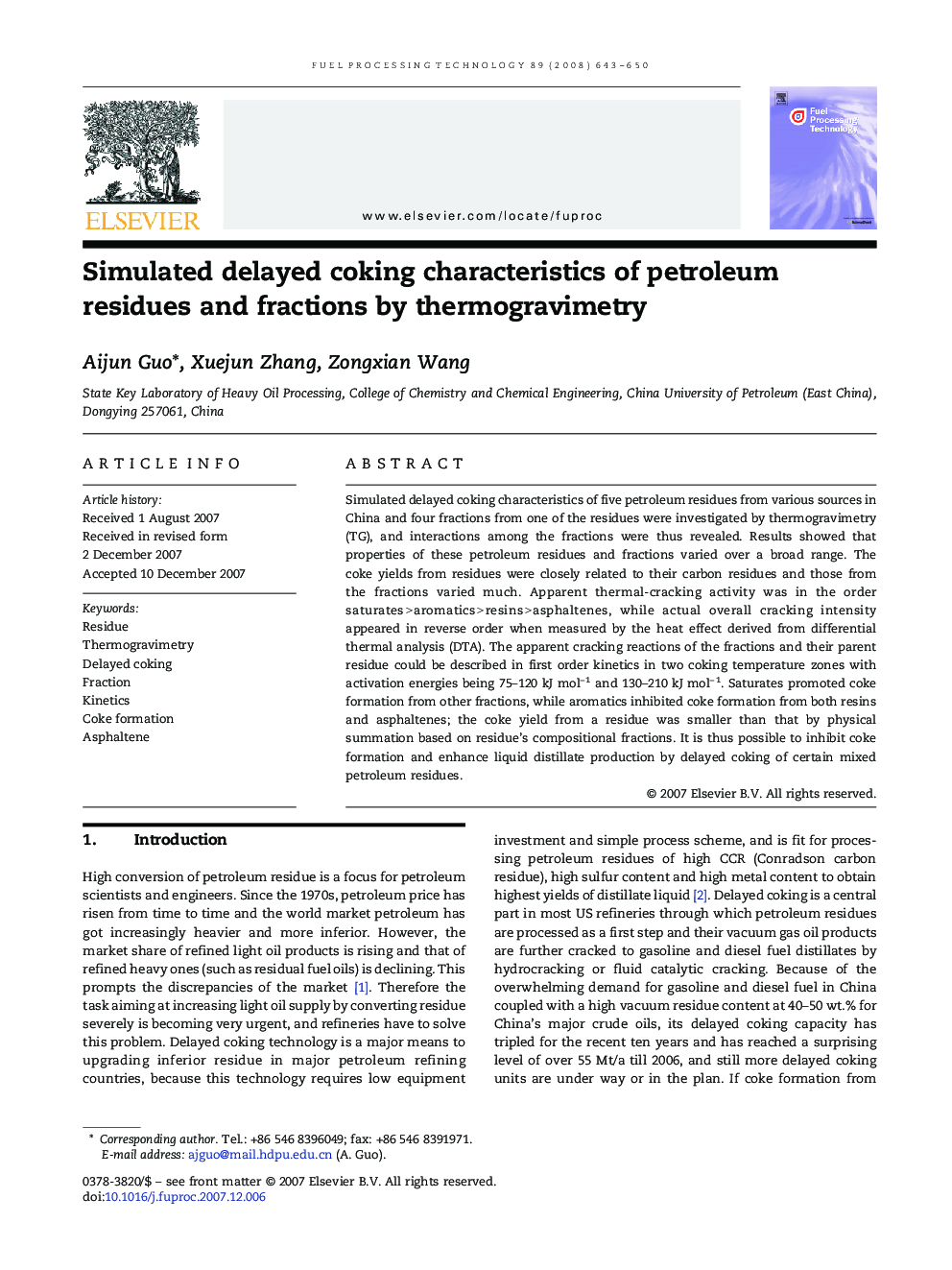| Article ID | Journal | Published Year | Pages | File Type |
|---|---|---|---|---|
| 211357 | Fuel Processing Technology | 2008 | 8 Pages |
Simulated delayed coking characteristics of five petroleum residues from various sources in China and four fractions from one of the residues were investigated by thermogravimetry (TG), and interactions among the fractions were thus revealed. Results showed that properties of these petroleum residues and fractions varied over a broad range. The coke yields from residues were closely related to their carbon residues and those from the fractions varied much. Apparent thermal-cracking activity was in the order saturates > aromatics > resins > asphaltenes, while actual overall cracking intensity appeared in reverse order when measured by the heat effect derived from differential thermal analysis (DTA). The apparent cracking reactions of the fractions and their parent residue could be described in first order kinetics in two coking temperature zones with activation energies being 75–120 kJ mol− 1 and 130–210 kJ mol− 1. Saturates promoted coke formation from other fractions, while aromatics inhibited coke formation from both resins and asphaltenes; the coke yield from a residue was smaller than that by physical summation based on residue's compositional fractions. It is thus possible to inhibit coke formation and enhance liquid distillate production by delayed coking of certain mixed petroleum residues.
